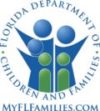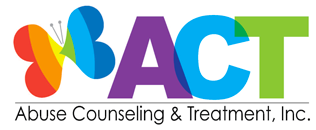Prevention
PREVENTION
Sexual violence, domestic violence (intimate partner dating violence), and human trafficking represent major health, criminal justice, human right, and development challenges. They threatens the lives and physical and mental health of millions of people, overburdens health systems, undermine human capital formation, and slow economic and social development. Programs that teach young people healthy relationship skills such as communication, effectively managing feelings, and problem-solving can prevent these forms of violence. These skills can help stop violence before it occurs.
Violence is predictable and therefore preventable. Evidence based interventions that prevent sexual and domestic violence include: social-emotional learning, promoting healthy sexuality, provide empowerment-based training, improve safety and monitoring in schools, establish and consistently apply workplace policies, address community-level risks through environmental approaches, mobilize men and boys as allies, and teach healthy, safe dating and intimate relationship skills to adolescents.
Kinds of Prevention:
Primary- Intervening before violence occurs
Secondary- Immediate responses after the violence has occurred to deal with
Tertiary- Long-term responses after violence has occurred to deal with the lasting consequences of violence.
Socio-Ecological Model
The Socio-ecological model considers the complex interplay between individual, relationship, community, and societal factors. It allows us to understand the range of factors that put people at risk for violence or protect them from experiencing or perpetrating violence. The overlapping rings in the model illustrate how factors at one level influence factors at another level.
What ACT does?
Violence Primary Prevention Rounds-
- ACT utilizes the curriculum Safer, Smarter Teens: Be the Change, which has been approved by the Lee County School District. It delivers critical safety information throughout six one-hour sessions and covers personal rights and responsibilities, sexual abuse including grooming tactics, healthy vs. unhealthy relationships, dating violence including sexual assault, the difference between flirting and sexual harassment, human trafficking, and self-advocacy including safety planning. Each session includes a 10-minute video, in-classroom activities, extension activities, and parent education materials. The Prevention Educators here at ACT can provide this education in person or virtually. The educators can use the virtual platform and utilize break out rooms, the chat box, and digital handouts to keep participants engaged while safe pandemic protocols are in place for schools.
ArtReach-
- ArtReach was developed and created by the Human Trafficking Awareness Partnerships (HTAP). ACT absorbed HTAP and has the honor of running the ArtReach program. ArtReach is a three hour program where Violence Prevention Educators work with a youth organization on providing kids tools to prevent violence. One hour is dedicated to education on a variety of topics (grooming tactics, red flags, consent, safe relationship skills, etc.). The next two hours focus on integrating these topics with art. Each program is adjusted and can be flexible depending on who the educators are working with.
Secondary Prevention-
- Our community education team offers trainings for workers in the community that directly come in contact with children. Topics include: Domestic Violence, Sexual Violence, Effects of Domestic Violence on Children, Batterer as Parent, Neurobiology of Trauma, and Human Trafficking.
- Free CEU’s and certificates will be provided for those licensed with the Florida Board of Clinical Social Work, Marriage and Family Therapy and Mental Health Counseling; Florida Board of Nursing; and Florida Board of Nursing- Certified Nursing Assistant.
Contact Kelly Rico at krico@actabuse.com to find out more about prevention programming and how to get involved








